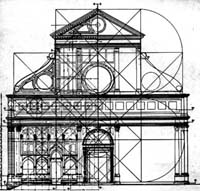
If we ask the pupils of a middle school class to draw a rectangle, the chances of having two equal figures are minimal: each will choose a different base and if, by combination, two should choose it the same, it will be difficult to match it height! By repeating the experiment with adults and replacing the word "rectangle" with that of "business card", the result is apparently the same, but the choice is no longer free as in the first case. This time each participant in the experiment will be conditioned by some factors, such as:
- the dimensional ratio (base / height), which will be consistent with the use for which the rectangle is intended (for example, if the ticket must be sent, it must fall within a well-defined shape);
- all business cards examined, including those belonging to people deemed worthy of esteem;
- the length of your name and surname and, therefore, the typefaces that must be used to write it;
- the space reserved for other eventual writings.
Finally, those who judge the results of the experiment compare the individual tickets in real time with what they would have chosen. If the rectangle must represent a door, intended as an element of access to an environment, surely the proportioning is to be bound to more precise criteria and each one, when proportioning it, gives, albeit unconsciously, the answer to a series of questions:
- who has to go through the door?
- what size is the environment to which the door must allow access?
- what are the architectural characteristics of the building to which it must belong?
- what is the scale of representation?
The questions assume that it is a door for a building intended for human beings, but it could be a shelter for animals, cars, rail cars, planes, etc.
After identifying the type of door to be represented, each one surely reviews all the doors he can remember and the chosen one is modified on the basis of a precise critical examination. The final result cannot be separated from personal culture: almost certainly the rectangle represented by those who, by profession, design the doors appears more beautiful than that proportioned by those who have asked themselves the problem for the first time! All this if it is a flat figure, but if you give the rectangle a thickness? The dimensional ratios increase (height / width, height / depth, width / depth) and the relative choice will depend on new factors. In the case of the door, each one imagines it to be functional; new questions arise (is it internal or external? with which material will it be made? etc.) and the analysis of the various types mentioned becomes more in-depth. We can take any other object and its geometric figure as an example: in any case we will resort to the cultural background that has been built up in us since the early years of life and whose entity we probably do not realize. Certainly dimensional analysis is an operation that our brain continually uses even to simply put books in a bag or to drive the car in urban traffic: no boy measures the volume of the books he intends to put in the folder, as well as no motorist blocks traffic to check with the meter if their car can pass between two parked cars, but certainly both both carry out a dimensional analysis in real time that does not disregard the experience gained. He who continuously uses a unit of measurement automatically makes a calibration of his "own brain", for example an expert designer evaluates the distance between two lines in millimeters. When the dimensional analysis concerns objects whose shape is particularly complex, the operation takes the name of relief: the simple arrangement of a piece of furniture in a specific environment requires the measurement of the overall dimensions of the piece of furniture and the identification of one suitable space to contain it. The operation may be trivial if it is a deposit, but it may require the intervention of an expert if it is to complete an existing furniture: think of a simple kitchen or the operating room of a hospital! The relief is not limited, in this case, to the analysis of geometric shapes but must take into account other factors, such as functionality, color, systems, etc. The information to be collected multiplies rapidly and the need arises to identify only the indispensable ones: thus the purposeful survey is born, whose difficulties vary according to the purpose that, for example, in the case of a person it can be a coffin, a cloak, a jumpsuit, a ceremony dress or a statue. Often the survey is carried out unconsciously: if between a tall and narrow car and a low and wide one we prefer the second one����